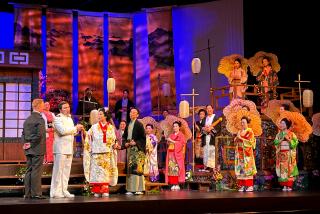Newsletter: Essential Arts: How Ragnar Kjartansson put Mozart on repeat — for 12 solid hours
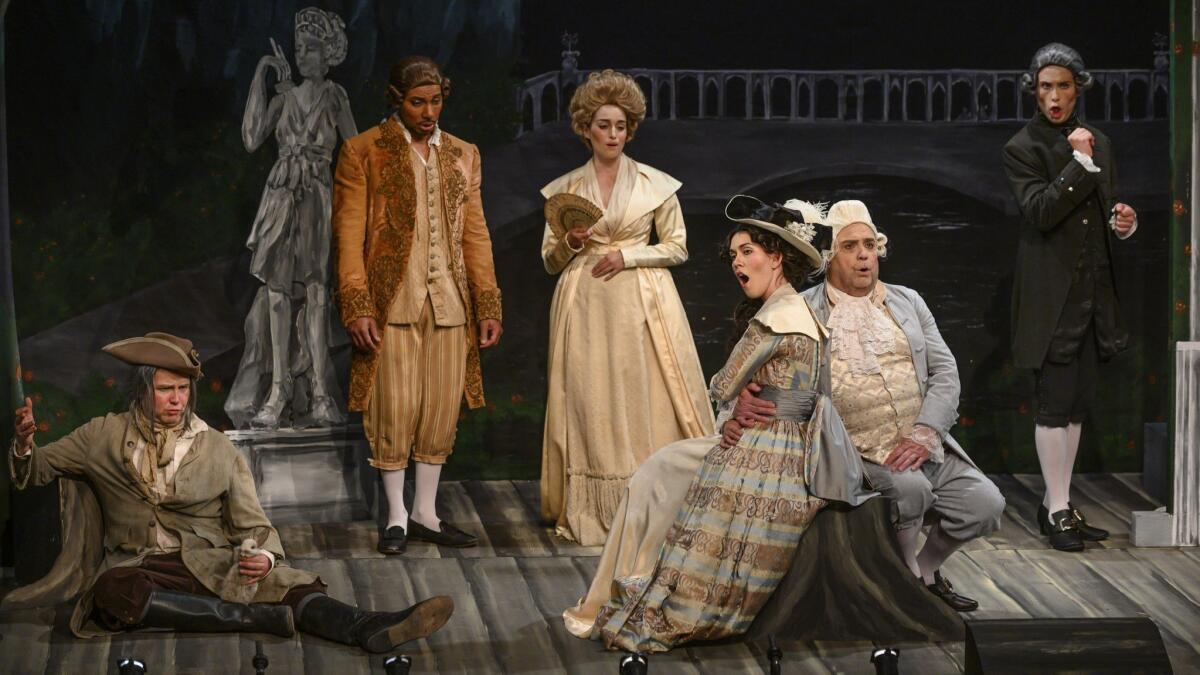
I’m Carolina A. Miranda, staff writer at the Los Angeles Times, and I’m baaack after two weeks in Japan, where I helped lead an architectural tour of the country as part of The Times’ travel program. While I was there, I also ate all the onigiri, bought all the cat hats and saw all the architecture. OK, not really. But I came close.
Considering Le Corbusier in Japan
Among the moments of divine kismet on my trip: being able to see a show of Swiss-French architect Le Corbusier’s paintings from the 1920s inside the National Museum of Western Art in Tokyo, a building he designed, and which was completed in 1959 — exactly 60 years ago.
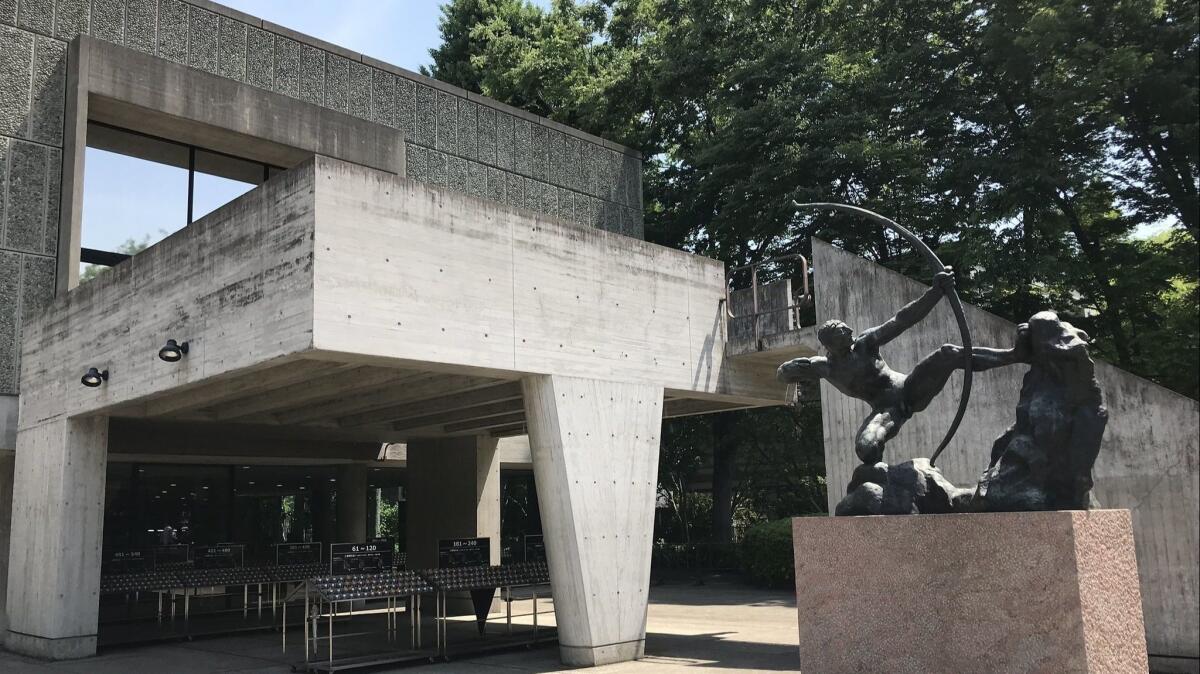
“Le Corbusier and the Age of Purism,” as the show was titled (it has since closed), featured paintings produced by the architect and his pal Amédée Ozenfant in the 1920s, when the two were busy promoting, in essays and in practice, a theory called “Purism.” A reaction to more cluttered Cubism, the style celebrated simple everyday forms and patterns, often presented in ways that evoked the machine-like.
Also displayed in the galleries were various model reproductions of important Le Corbusier buildings — such as the studio he designed for Ozenfant that same decade— reconstructions produced by design students at various university programs throughout Japan.
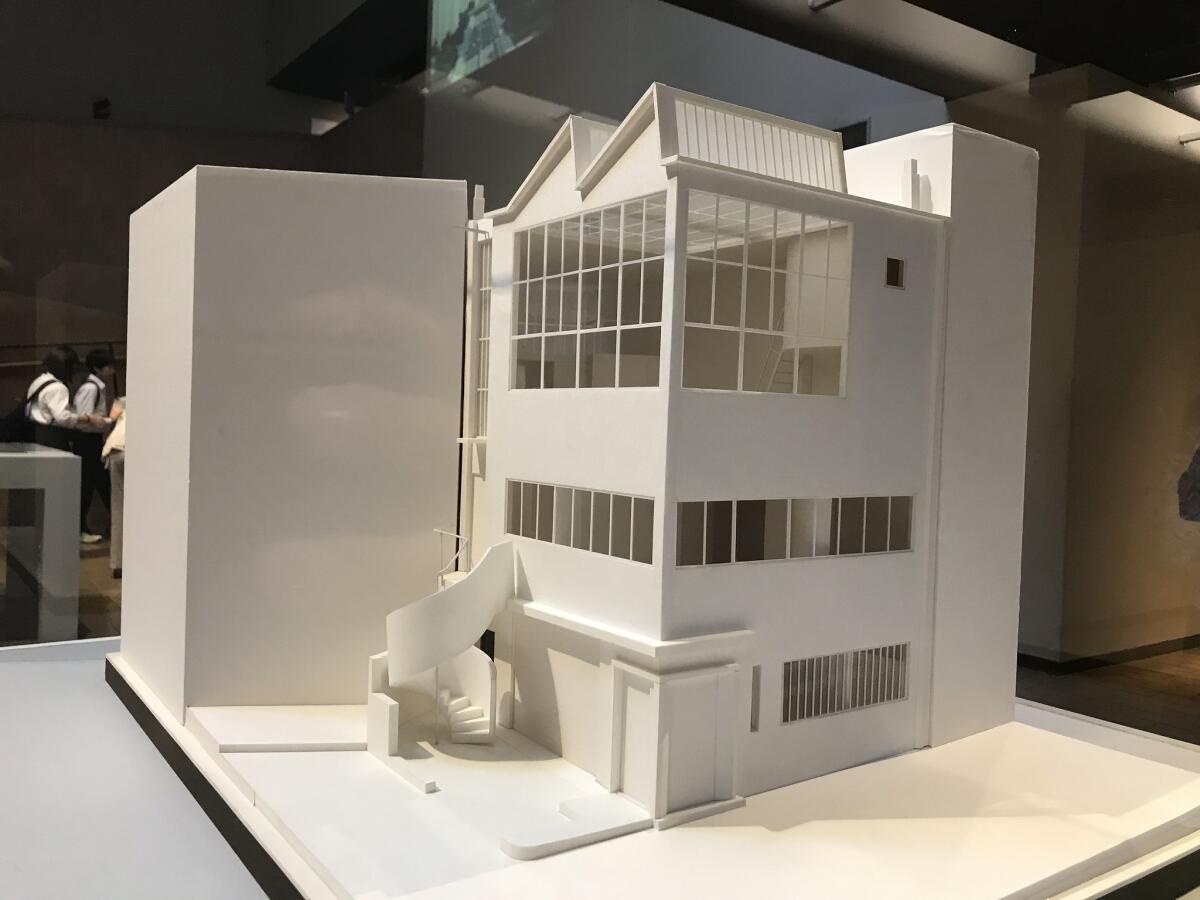
The paintings provided a good opportunity to consider Le Corbusier’s early interest in pattern and how that interest also manifested itself in his architecture. (To sum it up Twitter-style: lots of straight lines with a few well-placed curves.) It was also a good opportunity to consider Corbu’s influence on Japanese architects (such as the late Kenzo Tange, who would go on to win the Pritzker Prize in 1987).
In an essay in the exhibition’s catalog, curator Misa Hayashi notes that Corbu had a fierce following in Japan in the early 20th century, and that his most fanatical adherents were described as “Cor-disease patients.” But that may have been because in Corbusier, the Japanese may have seen a bit of themselves. Corbu’s avant-garde passion for clean lines and buildings elevated on pilotis was something Japanese architects had already been doing for several hundred years.
Now, on to the week’s news!
Going and going and …
The last three minutes of Mozart’s “Marriage of Figaro” played on a loop ... for 12 hours. That, in a nutshell, is Icelandic artist Ragnar Kjartansson’s “Bliss,” which was performed at REDCAT by the wild Up orchestra and directed by Christopher Rountree. The show was part of the L.A. Phil’s ongoing Fluxus series. Times classical music critic Mark Swed was there for the majority of it. (He took a break to go catch a Haydn concert in the middle.) “The genius of ‘Bliss,’” he writes, “is not that Kjartansson stops time. He makes it not matter.”
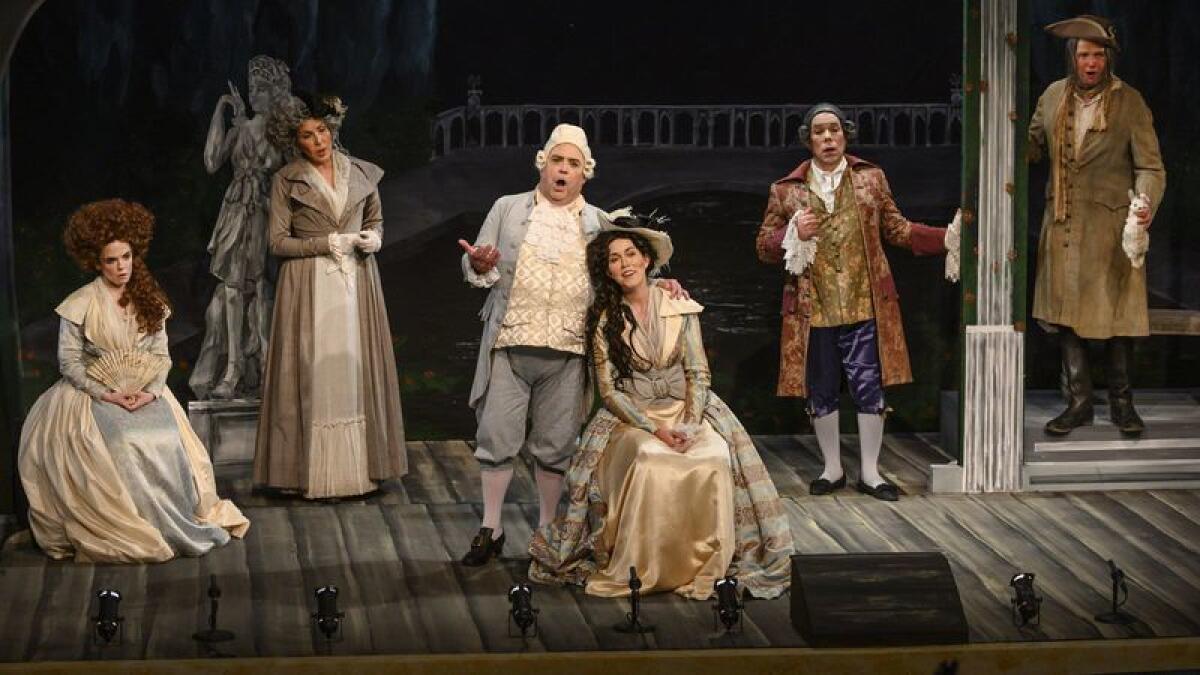
Classical Notes
Mark Swed also profiles Thomas Morris, artist director of the Ojai Music Festival, who will be leaving the job after 15 years at the helm. During his tenure, “Ojai has become even more a habitat for compulsive experimentation as well as a magnet for many of the world’s most accomplished musicians.”
Rick Schulz reviews “Hershey Felder: A Paris Love Story, featuring the music of Claude Debussy” at the Wallis Annenberg Center for the Performing Arts — in which the storyteller and musician melds stories of his own life story with that of the French composer. Felder, he writes, “finds the right balance between musical scholarship, personal memoir and Debussy’s biography.”
And contributor Catherine Womack has a sit-down with cellist Amanda Gookin, who brought her Forward Music Project to the Wallis this week. The project is a commissioning concert series focused on issues that affect women and girls.
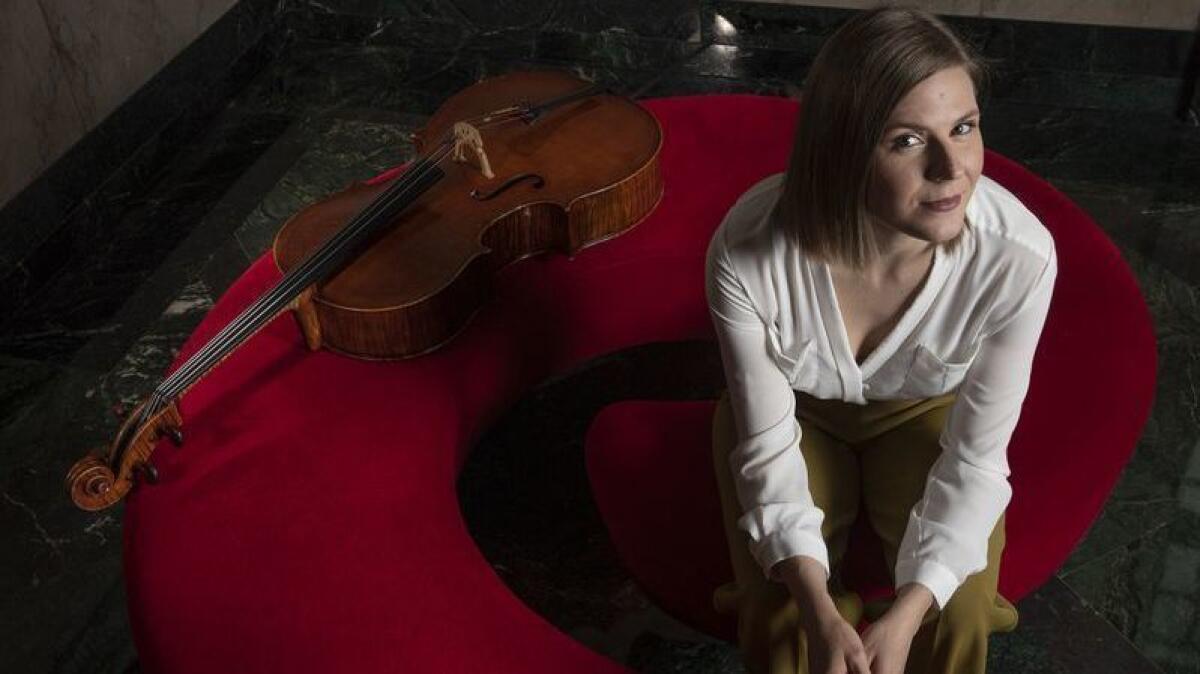
The park in Exposition Park
There’s a lot happening in Exposition Park — a new soccer stadium, a revived California African American Museum and the rising Lucas Museum of Narrative Art. But the park itself? Not so hot, reports design writer Sam Lubell. He has a look at a new master plan by Torti Gallas + Partners that would spruce up the outdoor areas and connect islands of park that were previously disconnected. The big question: Will the plan get needed funding?
On a sort of related note, I’m looking forward to the nicknames that will undoubtedly be generated by the Lucas Museum. Design critic Alexandra Lange has contributed “Butter Dish by Dyson.” I’m going with “Sneaker Tread of Insanity” — but I reserve the right to change my mind.
A good constitution
Times theater critic Charles McNulty has gotten to work sorting through the Tony Awards odds and notes that it’s down to a two-way race between the biggest prize winners: Jez Butterworth’s “The Ferryman” and Heidi Schreck’s “What the Constitution Means to Me.” He says the race leans toward “Ferryman,” but he’s going “Constitution.” Schreck, he writes, “is part of a vibrant democratizing push in the American theater that’s expanding the range of voices and the scope of sensibilities.”
On the stage
Susan Sarandon, who hasn’t appeared onstage in a decade, is making her comeback in Jesse Eisenberg’s off-Broadway production of “Happy Talk,” with Marin Ireland a in New York. Contributor Stuart Miller chats with the pair. “I didn’t want to do another Broadway play,” Sarandon tells him about her return. “There’s so much financial pressure that it becomes another whole animal.”
Plus, The Times’ Daryl H. Miller reviews Cory Hinkle’s “The End of Beauty,” at Atwater Village Theatre through mid-June — a work centered on the lives of a fractious art professor couple.
In the galleries
David Pagel has been doing the gallery thing, checking out a show of “casually thrilling” paintings by Holly Coulis at Philip Martin Gallery and Amanda Valdez’s “freewheeling” mixed media works at The Landing.
Also on the rundown was June Edmond’s show of paintings at Luis De Jesus Los Angeles. Her abstract paintings, he reports, “echo the structure of the star-spangled banner,” he writes, but “your gut tells you that you have entered a place of mourning.”
Your support helps us deliver the news on the culture stories that matter most. Subscribe to the Los Angeles Times.
Ready for the Weekend
Matt Cooper has the week ahead in art, theater, music and dance, as well as his weekend picks — which includes an Art Deco-inspired production of “La Traviata.”
Margaret Gray rounds up what’s happening in small theaters in the 99-Seat Beat, which includes a saucy little musical about gay porn.
And my weekly Datebook is back, with a key survey of the late L.A. assemblagist John T. Riddle Jr. at Craft Contemporary.
What I’m reading
Do not miss this incredible report by Amy Chozick about what has happened to Peter Max and his studio as the 1960s pop and graphic artist has aged and lost some of his mental faculties.
In other news
— Artist Beau Stanton will make changes to a mural in a Koreatown school that had been the subject of controversy over a sunburst pattern that some had likened to the pattern of the Japanese battle flag.
— Speaking of art controversies: a sculpture by Glenn Kaino of hands making the “L.A. fingers” is going in the Arts District — and not in Boyle Heights, to the dismay of some.
— Workers at the Louvre in Paris have gone on strike in response to crowded and deteriorating conditions.
— The neighborhood of Venice is preparing to say goodbye to Mark di Suvero’s beachside sculpture “Declaration.”
— Pioneering artist Judy Chicago and filmmaker Jordan Peele will be this year’s Hammer Museum gala honorees.
— An exhibition at the Oakland Museum of California centers lesbian contributions to art and culture.
— The CalEarth campus in Hesperia, which features the innovative adobe architecture of the late Nader Khalili, has reopened to the public after adding a fire road.
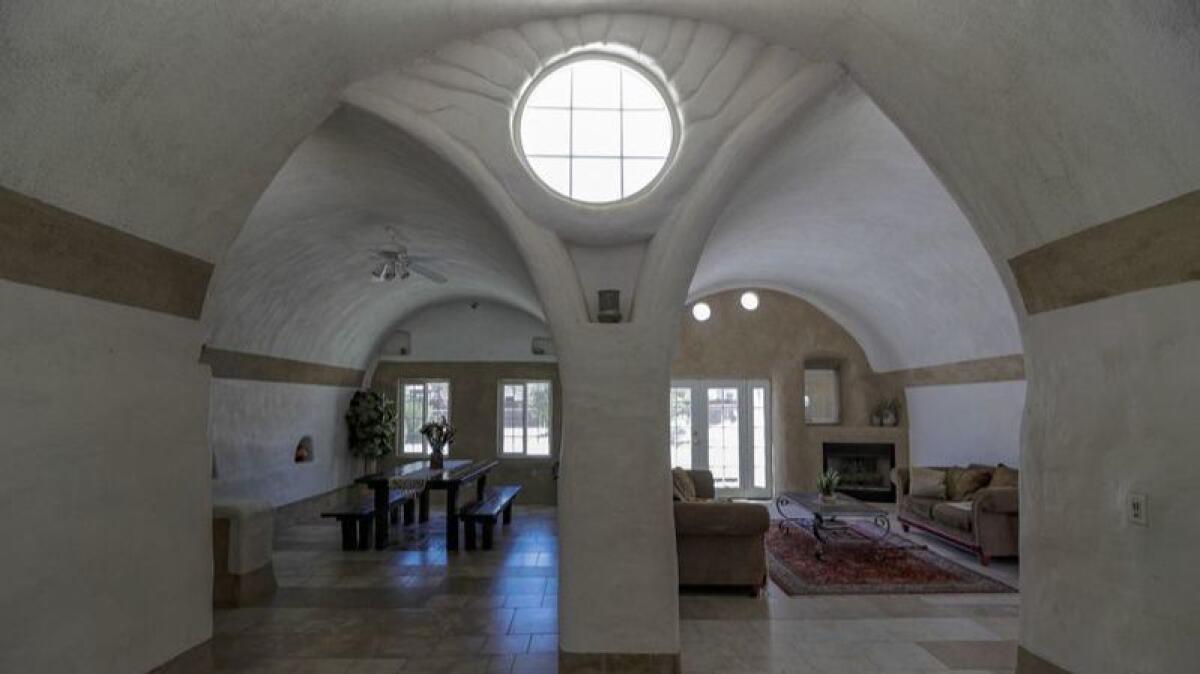
— “It’s an outright scam to call highway-widening ‘traffic relief.’” Urbanism writer Alissa Walker is not having anymore freeway widening efforts.
— A story about Helen Liu Fong, the late Chinese American designer who helped give L.A.’s Googie architecture its panache.
— The history of hip-hop as told through photography.
— How contemporary opera is grappling with race.
— Staging Karlheinz Stockhausen’s “Aus Licht,” complete with helicopter.
And last but not least …
An artist’s guide to raising children.
carolina.miranda@latimes.com | Twitter: @cmonstah
More to Read
The biggest entertainment stories
Get our big stories about Hollywood, film, television, music, arts, culture and more right in your inbox as soon as they publish.
You may occasionally receive promotional content from the Los Angeles Times.


